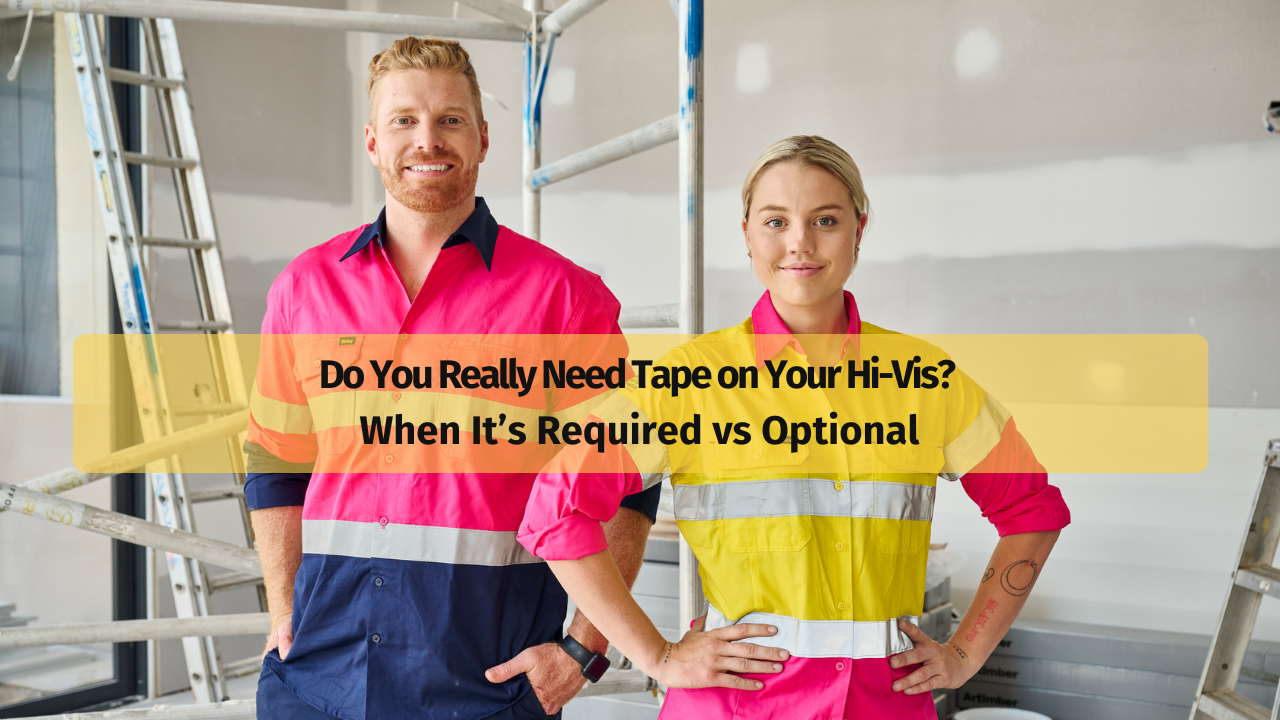Not Every Shirt Needs Stripes
Hi-Vis workwear is a must on Aussie job sites — but does it always need reflective tape? The short answer: not always. The longer answer depends on where you work, what you’re doing, and the lighting around you.
Understanding when reflective tape is required (and when it’s not) helps you stay compliant without overdoing it.
When Reflective Tape Is Mandatory
In Australia, visibility rules are set by AS/NZS 4602.1:2011 for High-Visibility Safety Garments. According to these standards, reflective tape is required when:
-
You’re working at night or in low-light conditions
-
Visibility is reduced due to weather, dust, or underground work
-
You’re in roadwork zones or near traffic
The tape needs to meet Class R (Retroreflective) or Class RF (Retroreflective + Fluorescent) specs — and be placed in a compliant configuration (e.g. biomotion or cross-back).
When Tape Is Optional
If you work only during the day and in well-lit areas, reflective tape is usually optional. That includes:
-
Indoor warehouses with good lighting
-
Outdoor jobs only during daylight hours
-
Workshops or non-traffic environments
In these cases, you’ll still need a Fluorescent Class D garment for daytime visibility — just without the reflective tape.
What About Night Shift?
If your job runs past daylight hours, Hi-Vis with tape becomes essential. It’s not about overdoing it — it’s about being seen by others, especially vehicle operators.
Even if lighting seems okay at the start, tape helps reflect headlights and artificial light, making you more visible from all angles.
The Bottom Line — Check Your Site Rules
Some workplaces have stricter rules than the minimum standards. Always double-check site-specific PPE policies before choosing your Hi-Vis.
When in doubt, go with:
-
Day/Night Compliant Taped Hi-Vis if your hours vary
-
Class D Non-Taped Hi-Vis for strictly daytime, well-lit work
Final Word
Reflective tape isn’t just about ticking boxes — it’s about being seen. Knowing when it’s required helps you stay safe and avoid non-compliance on site.
Make sure your Hi-Vis matches your work conditions, not just what’s on sale.







